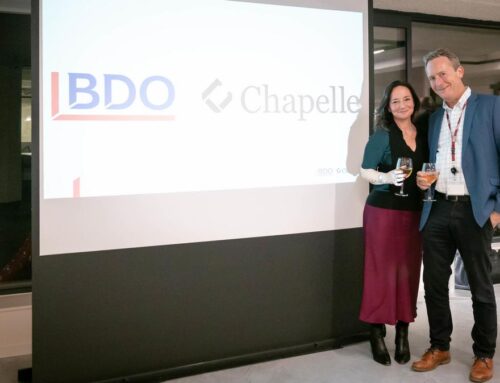How to value a company in uncertain times?
What is a company worth? That’s never a simple question, and definitely not in times of great uncertainty. Let alone during a crisis such as the current COVID-19 pandemic. Greater challenges, different pitfalls, creative solutions!
David Lenaerts, Partner BDO Audit, Erik Van den Broeck, Partner BDO Financial Advisory
When speaking of transactions (sale, capital increase, contribution), it’s often said that a company is worth whatever the buyer or investor is willing to pay. That’s undeniable, but how do you determine that amount? Such valuations are affected both by factors specific to the company and the sector in which it operates and by factors specific to the potential buyers. Though the latter can impact price significantly, factors such as economies of scale, access to a new market, potential synergy or lower competition are much harder to include in a valuation exercise.
So, how exactly is a company valuation performed? Two traditional valuation methods exist. For a summary, see our ‘Valuation of start-ups’ data sheet in To The Point 2/2020. The first method is based on the company’s expected future free cash flows. The second method is based on so-called multiples (e.g. EBITDA or sales). Each method has its own peculiarities.
“A company’s value is determined by factors specific to the company and those specific to the potential buyer.”

‘Discounted Cash Flow’-method
The first method – ‘Discounted Cash Flow’ (DCF) – is a very common valuation method. It reduces future free cash flows to their current value at the time of valuation. The company’s value is equated to what it ‘will deliver’ to the shareholder in the future. The present value of future cash flows is calculated by discounting them against the Weighted Average Cost of Capital (WACC). This is determined by ‘weighing’ the costs of equity and debt depending on each asset type’s share in the company’s total financing. Because the present value discounts any future cash flows, in practice it is common to use a detailed estimate for a business plan’s duration (e.g. 5 to 10 years) and a residual value for the subsequent period.
Challenges with the ‘Discounted Cash Flow’ method
The success of this first method depends heavily on the predictability of future cash flows. And that’s precisely what is lacking in these uncertain times. Historical performance and trends are often used as starting points for the forecasts. But is that still a good idea in the current context? How to address a sudden change in the company’s trend curve due to the COVID-19 pandemic? Should the impact simply be converted into an abstraction? It might make sense to do so once all the upheaval is safely past and we’re back to business as usual. Unfortunately, many companies are still experiencing the (generally negative) effects of the COVID-19 crisis every day. Moreover, in some sectors, the business model may remain affected for a long time to come, or even change permanently. In such cases, a company’s historical performance will be a poor guide in determining the budget. This can make producing reliable cash flow forecasts quite a challenge!
Valuation is much more complex than simply adding up cash flows or multiplying an EBITDA.
The valuation also reflects that uncertainty. To account for the uncertainty, the required internal rate of return (IRR) can be increased to express the higher risk. A higher IRR will drive up the WACC too, while the calculated net present value will drop. It is also possible to apply a discount (x%) to the calculated enterprise value. The size of this discount will depend on the buyer’s assessment of the risk.
Finally, remember that the enterprise value resulting from ‘discounting’ free cash flows will still require a deduction of the net financial debt (debts minus free cash flow) to determine the share value.
‘Multiples’ method
With the ‘Multiples’ method, a company’s value is determined by comparing it to the value or price of similar companies. Comparisons to listed companies are known as ‘market multiples’. Those based on prices paid during mergers and acquisitions are ‘transaction multiples’. The most common multiples are EBITDA (Earnings before Interest, Tax, Depreciation & Amortisation) and sales. Sales are often used for companies with no stable EBITDA as yet, such as start-ups or scale-ups. For companies where no sales are yet available – such as start-ups, biotech firms, or other research & development companies – other valuation methods can be used, such as the ‘technology value’ or ‘discounted future multiple’ methods. Finally, certain sectors also use other reference values for multiples, such as the GM (Gross Margin), EBIT (operating profit) or EBITDA (operating cash flow for rental fees).
For example, a turnover of 2 million EUR and a ‘sales multiple’ of 3 will result in an enterprise value of 6 million EUR. Here again, of course, it is necessary to offset the net financial debt against the enterprise value to arrive at a share value.
Challenges with the ‘Multiples’ method
Just like the ‘DCF’, the ‘Multiples’ method is subject to many challenges in these turbulent times.
First of all, the ‘multiple’ values are based on a peer group of comparable companies. To find these, we rely on specialised databases. Assembling a good peer group is the first important challenge. It can be difficult to identify enough quality peers, especially for companies in niche markets. In addition, due to the current crisis, some peers may have changed their business models to such an extent that they are no longer representative.
‘Multiple’ values can diverge significantly within the identified peer group. Therefore, it is advisable to remove any ‘outliers’ before calculating the median or average.
< The ‘Multiples’ method also often applies a so-called ‘illiquidity’ discount, as these shares are less easily traded than those of listed companies.
For an ‘EBITDA multiple’, for example, the formula is as follows:
(X * EBITDA) – NFD) * (1 – Y)
X = ‘Multiple’ value based on peer group
Y = ‘Illiquidity’ discount
NFD = Net financial debt
The COVID-19 crisis has had a significant impact on the turnover and results of many companies. So, how can you account for that when using a ‘sales’ or ‘EBITDA’ multiple? Watch out for the following pitfalls:
If both the EBITDA and the multiple reflect the pandemic’s (negative) economic impact (read the box on ‘Double dip’ risk), you will end up accounting for this impact twice over. It is therefore crucial to monitor the multiple’s development over a longer period. That way, you can see whether or not the multiple is recovering. If the multiple has not (or not sufficiently) recovered, the EBITDA used must employ a (partial) abstraction of COVID-19’s negative effects (and vice versa).
‘Double dip’ risk
In the example below, we calculate an ‘Enterprise Value/EBITDA multiple’ for a listed peer. For the period before COVID-19, this amounts to 400/100 = 4.0 X. However, if stock market prices accounted for COVID-19’s impact and lowered the enterprise value by 20%, the multiple drops to 3.2 X (based on the last known EBITDA before the COVID-19 crisis). When we apply this 3.2 X to the company for the revised figures following COVID-19 (e.g. for a lower budgeted EBITDA), the estimate of the actual value will be too low, as COVID-19 has been taken into account twice. Thus, it’s important to compare figures on an identical basis and perhaps switch to a ‘forward-looking EBITDA’ (calculating the multiple based on post-COVID-19 stock exchange information, with operational figures that are also adapted to the post-COVID-19 situation).
| Peers (stock market) | |
|---|---|
| Enterprise Value | |
| pre COVID 19 | 400 |
| post COVID 19 | 320 |
| ebitda | |
|---|---|
| pre COVID 19 | post COVID 19 |
| 100 | 80 |
| 4,0 X | 5,0 X |
| 3,2 X | 4,0 X |
Consider the company’s individual performance compared to the peer group. After all, the companies in the peer group are not truly identical to the company being evaluated. As a result, there is a risk that the COVID-19 crisis affects them much more, or less, heavily. Be careful not to compare apples to oranges!
Valuing a company is much more complex than simply adding up cash flows or multiplying an EBITDA. It is always important to take the context into account – and even more so at this time. After all, the COVID-19 crisis will greatly increase the impact of any inconsistencies on the valuation.



















